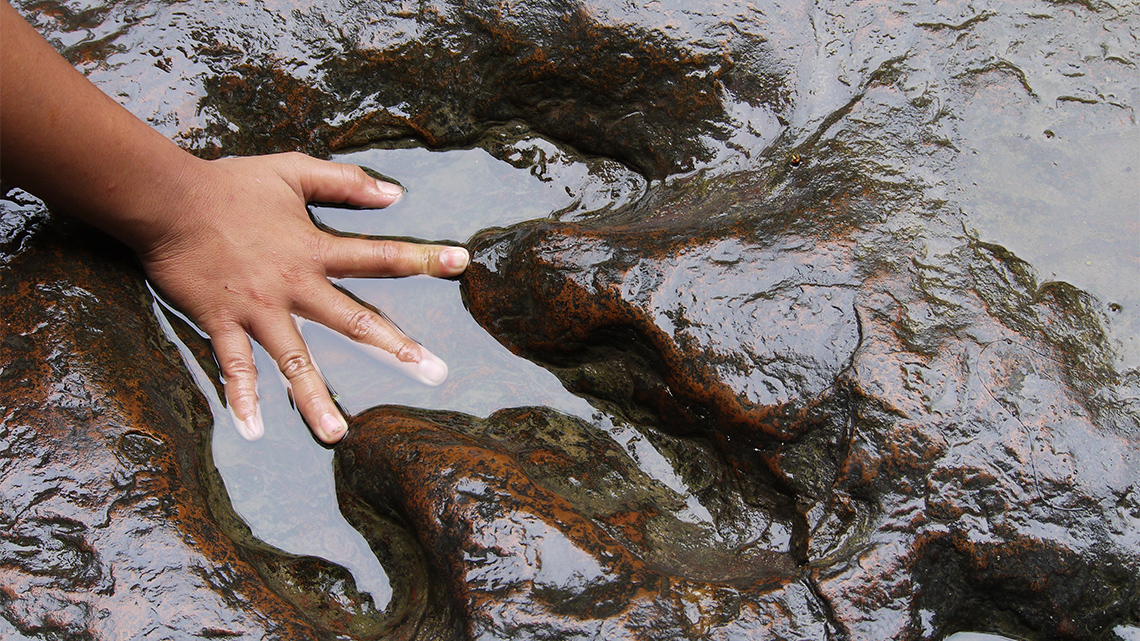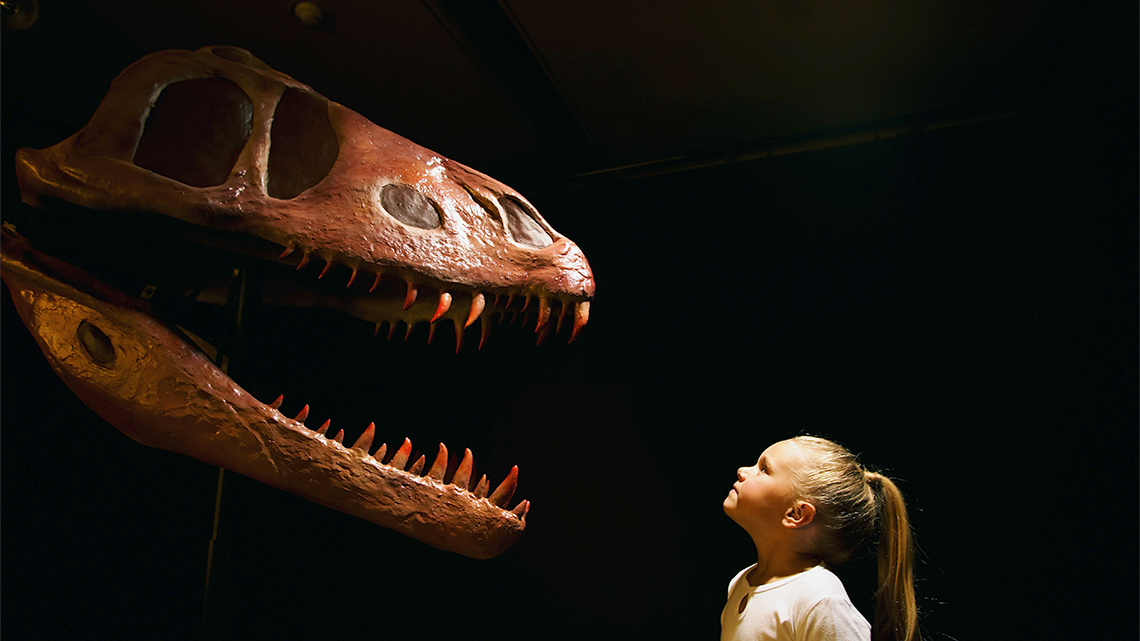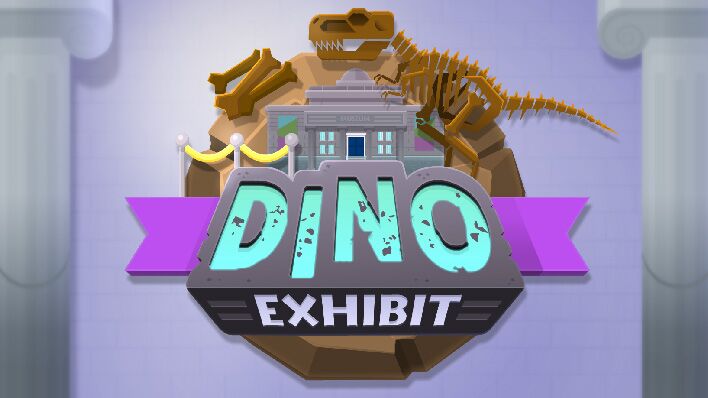Minds On
Studying animals
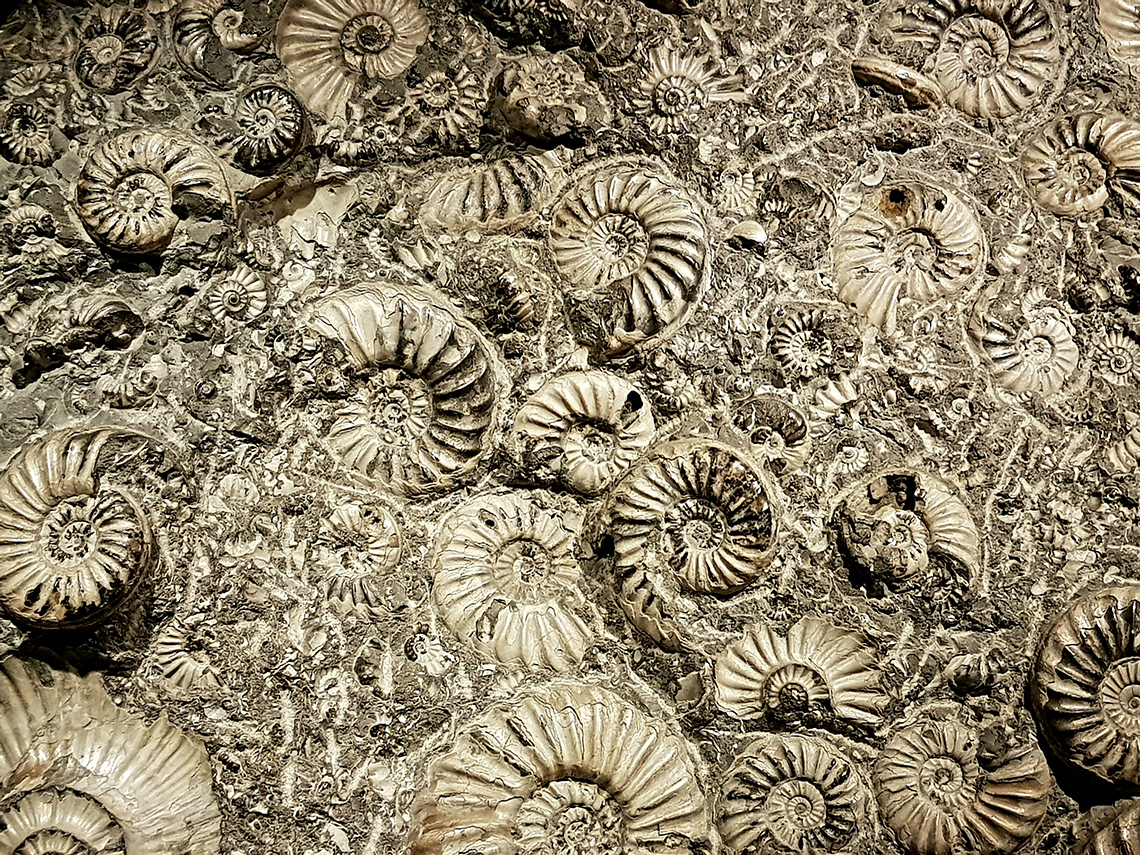
Scientists study animals that are alive today but some scientists also study animals that are no longer alive today.
A paleontologist is a scientist that studies fossils to learn about dinosaurs that lived a long time ago.
Paleontologist
Fossils can be the impressions left by bones into rock when the rock was not yet solid. The image you previously explored was a rock full of fossils from long ago!
Just like studying animals today, studying the bones of dinosaurs helps us understand how they moved and how they adapted to their environment billions of years ago.
Finding fins, wings, legs, and upright bodies can give clues to how dinosaurs moved around.
- Can you think of an animal today that uses fins to move?
- How about wings?
- What is an animal that uses their legs to move around?
Match the movements
Let’s pretend you’ve found 3 dinosaur fossils!
Match each fossil to the dinosaur movement.
Action
Describe the dinosaur!
In the Minds On section, you used clues to help understand how each dinosaur may have moved around their space. Now, let’s pretend you discovered the following dinosaur:
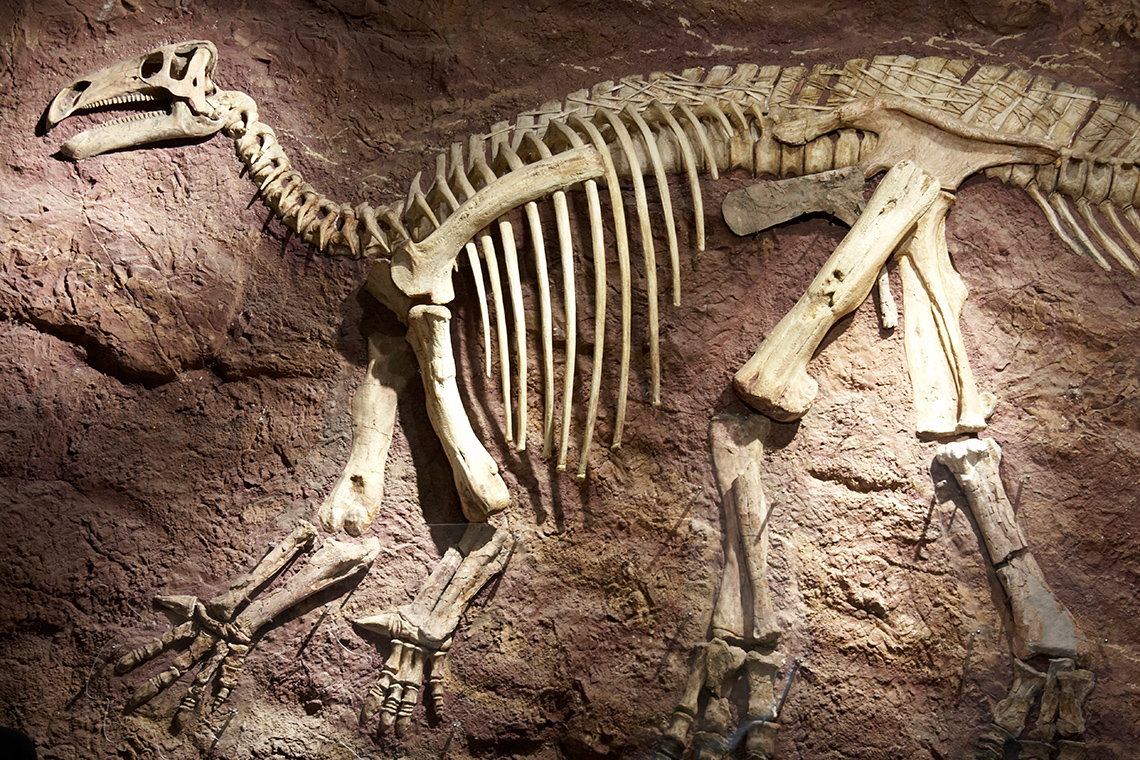
Explain to museum visitors how the type of dinosaur you discovered might have moved around.
For each sentence, select the missing word from the drop-down menu.
Creature clues
Just like animals who are alive today, some dinosaurs and reptiles lived on land, some swam in the water, and some could fly through the air.
Studying bones help us understand how animals move. Long limbs act like big handles for muscles for big movements. Small bones move small muscles.
Dinosaur detective!
Check out the following sets of dinosaur and reptile bones. For each set of bones, select the dinosaur or reptile that best matches.

Time to learn! We can learn things from different places and people.
Let’s learn more about the three dinosaurs and reptiles we explored in the previous section! The information in the following flashcards were found by studying the bones of these dinosaurs and reptiles.
As you explore these creatures, think about these two questions:
- How did the animal use their bodies to move around their area?
- What body parts did the creature use to help them eat and survive in their environment?
Record your ideas on the computer, on paper, in a recording or in a method of your choice.
Scientists use pictures and information as clues to help them answer questions.
Time to learn! We can learn things from different places and people.
Student Wellness
Dancing dinosaurs
Explore the following video about the movements of the Tyrannosaurus rex, Brontosaurus, and the Pterodactyl with these dance moves. The video explores how these dinosaurs moved through the use of dance.
Answer the following questions about dinosaur movements!
Extinction
Dinosaurs no longer exist. They are extinct because of natural processes.
Press the ‘Definition’ button to learn about the word extinction.
Extinction means that there are no more of that species left anywhere on Earth.
Do you think if dinosaurs lived today, they would be harmful or helpful to humans?
Explain your thinking.
Dino discovery
This learning activity connects new and existing approaches for young scientists to create positive changes in their communities.

Many dinosaur bones have been found in Alberta. Paleontologists uncover them carefully and help others conduct research. Each time they uncover new bones and fossils, they learn more about dinosaurs and the environment at the time of dinosaurs.
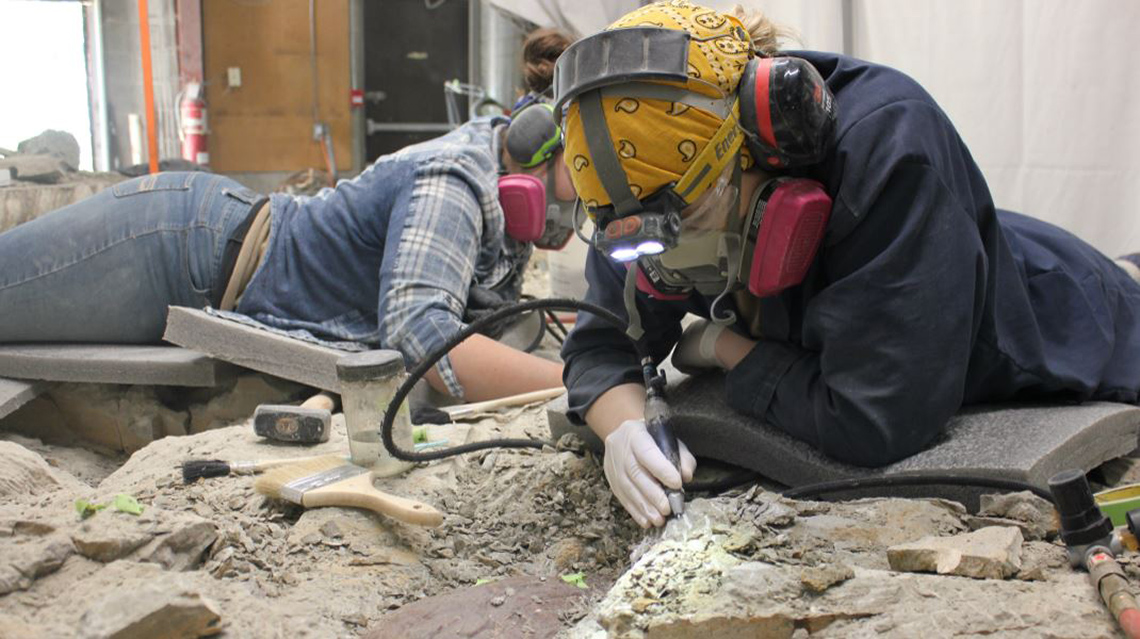
In Trenton, ON, a museum conservator carefully chisels away at a large block to fund fossils of turtles, crocodiles, clams, snails and plant material from long ago.
Emily Villars, who is working on this large block shares:
“It’s pretty awesome to come into work and be part of discovering something new.”
–
Emily Villars
Pause and Reflect
Pause and reflect
How does the work of paleontologists help us to understand the time of the dinosaurs?
Why might this work be important?
Consolidation
Let’s compare!
Let’s compare two of the dinosaurs we investigated in the Action section and how they use their bodies differently to move and survive in their environment.
- How are the following two dinosaurs the same?
- How are they different?

Pleiosaurus
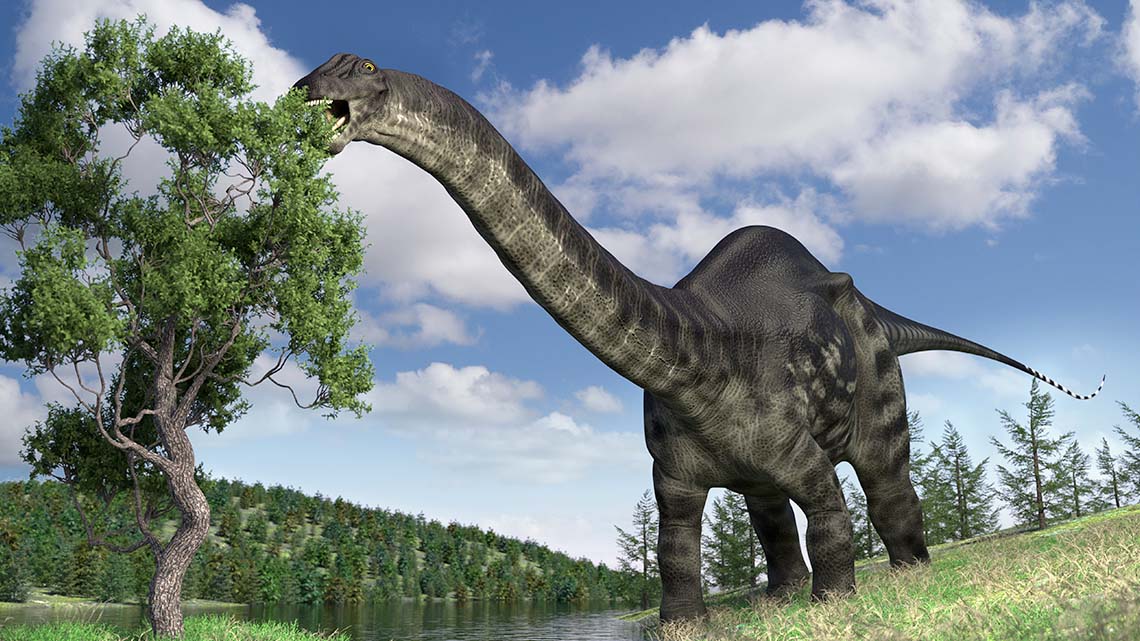
Brontosaurus
Use a method of your choice to record your answers about how they are the same and how they are different.
Share a story
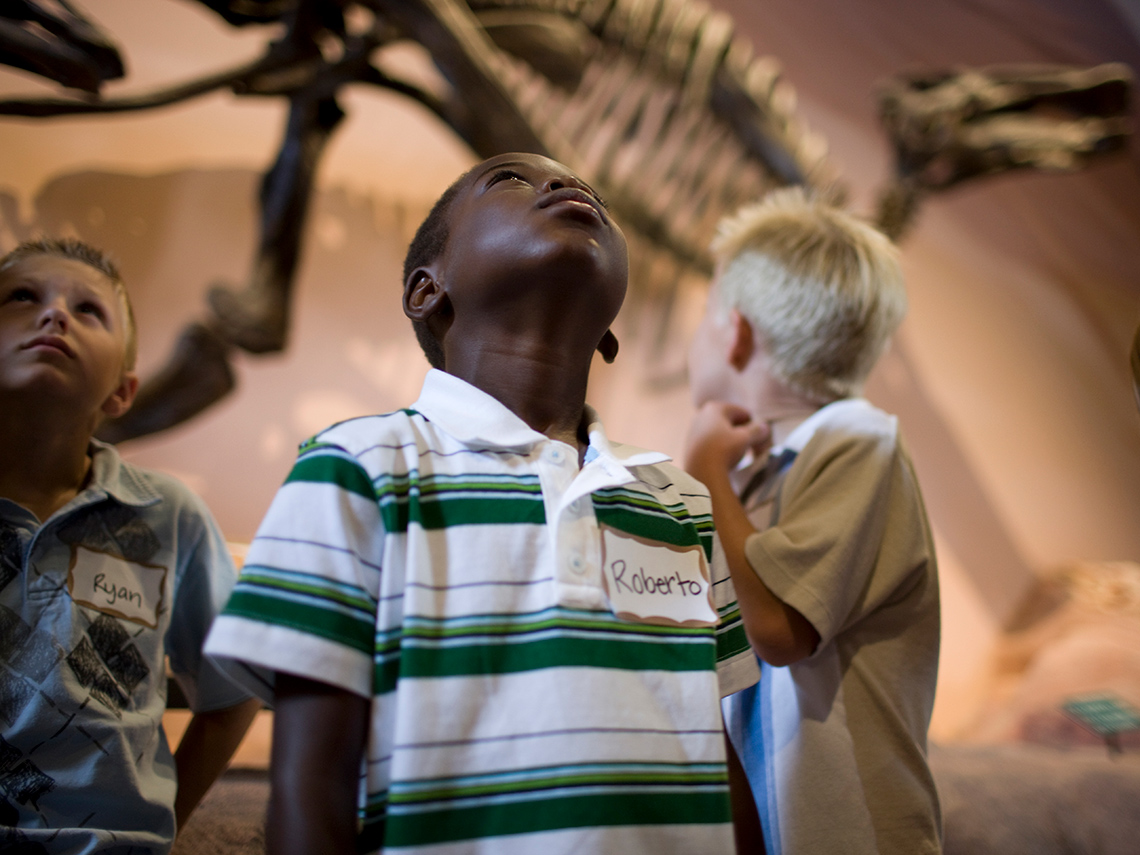
Using what you’ve learned about dinosaur bones, choose one of the following images and create a story about the dinosaur who might have left it behind and about the scientist who found it.
Your story can be in a format of your choice.
In your story:
Dinosaur story images
Use one of the following images and descriptions for your story.
What a Grade 2 student can do
Even today, we have animals and plants that are at risk of becoming extinct like the dinosaurs, but a Grade 2 student can help by:
- learning more about plants and animals and sharing your learning
- helping to protecting the natural spaces where they live
Reflection
How do you feel about what you have learned in this activity? Which of the next four sentences best matches how you are feeling about your learning? Press the button that is beside this sentence.
I feel…
Now, record your ideas about your feelings using a voice recorder, speech-to-text, or writing tool.
Press ‘Discover More’ to extend your skills.
Discover MoreDino exhibit
It’s time to play a game! Help Dana put the fossil bones back together in time for the Dinosaur Exhibit to open!
You will now access Dino Exhibit.
